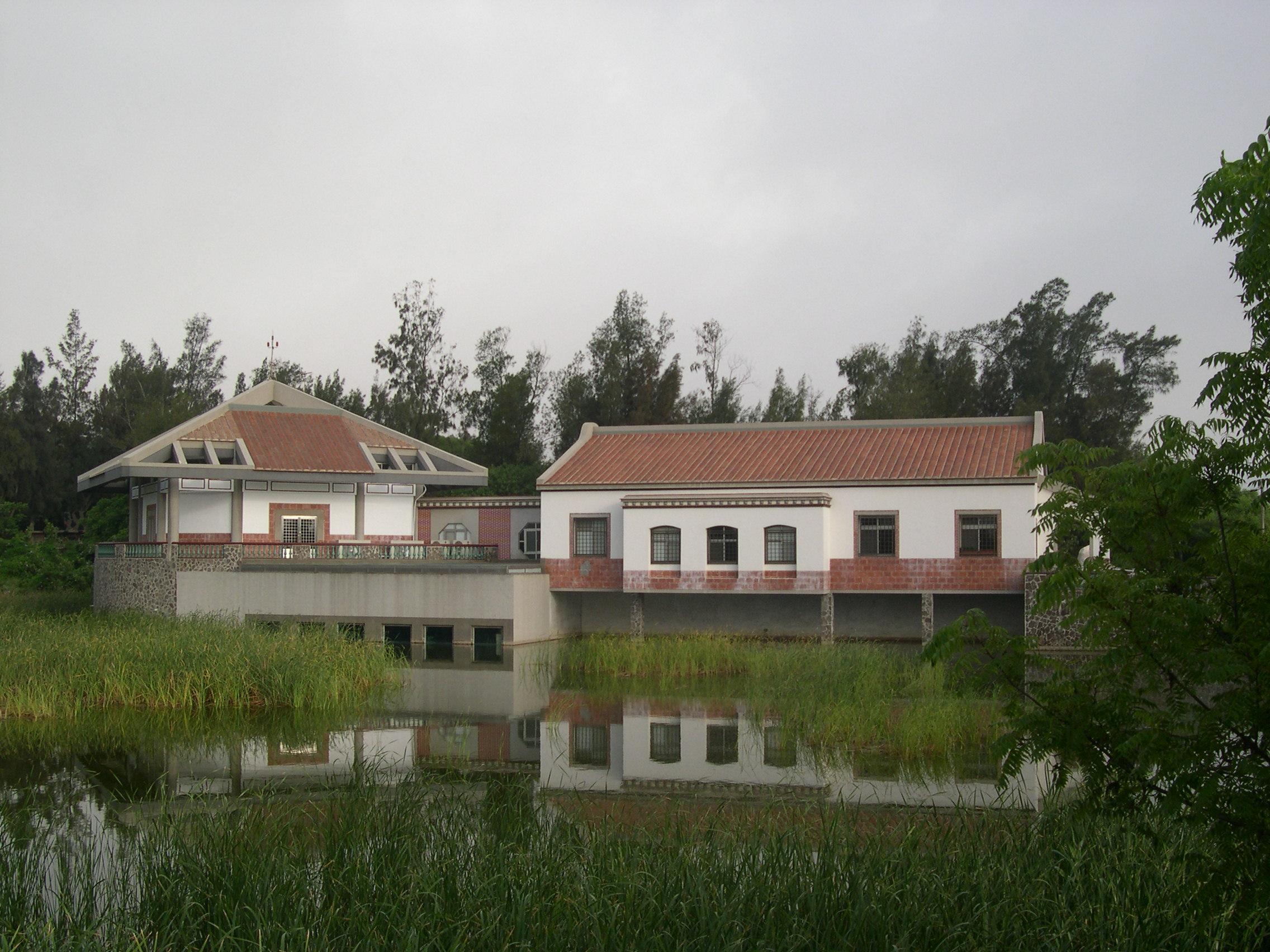Cih Lake and embankment of Cih Lake 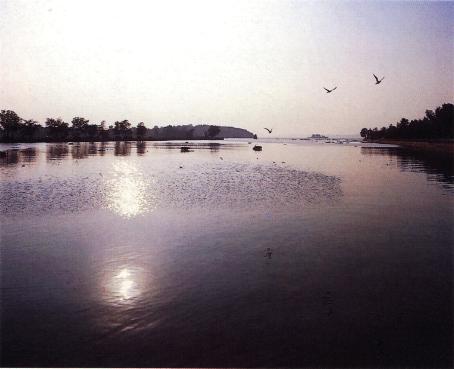 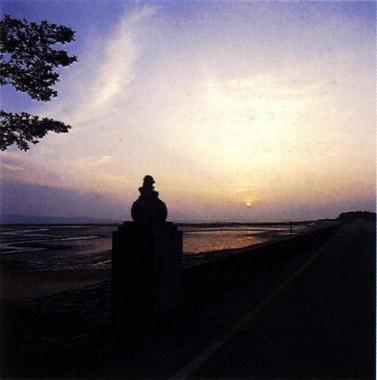
|
| Cih Lake is in the northwest part of Kinmen Island. It was create by An-lan Ma who was former Defense commander of Kinmen in 1969, and completed the following year. It is a salt water lake that is banked up from the sea and connects with the see. The embankment has about 550m long. Because this lake is abundant in fish and shrimps, so visitors often fish here on holidays. In addition, the forest area nearby nests many kinds of birds, and the low-watery land around it is also abundant in birds, so it is also a good place to study bird ecology. Cih Lake embankment is wide and straight, against the Amoy city across the sea. When strolling on it, people can watch the sea, take a look at sunset in dark, listen the wave, and look at stars in the sky. It is really a happy life |
Shuiwei tower 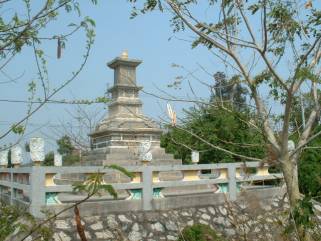 |
| Faced the left of Kuan-ti Temple, Shuiwei Tower has been the only submarine tower. It was built in 1767 AD with the square shape, three stories in total, and there is one character on each of the four walls, which are “Buddha,” “law,” “monk,” “treasure.”, The former three characters represent three treasures of Buddhism that can calm mind, keep from evil, suppress evil wind from the sea, and protect inhabitants. The character “treasure” faces towards inside means to protect treasure and warn people to be thrift. |
Zhenwei villa—Commander’s office 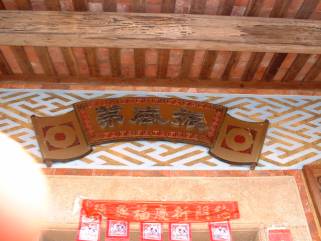
|
| It is located in the entrance of east of Beishan. Folks called it “commander’s office.” It was built as early as 1789-1794 AD and belonged to the former commander Kuang-hsien Li who lived in Cing dynasty. The board was hung when he was a commander. In early 1911, the house was used by public primary schools of Guning and Beishan as the cradle for future talents. In 1990, it was classified as the national third class historical sites to preserve local culture. |
| Wind Lion God, is the title of this kind of stone statue. Its appearance looks like a lion and a tiger and a human, some squatting, some standing, some crouching and some lying. It can be seen in many of village entrance, place around the temple, or beside pools. It is responsible for the blessing of peace in the village and to resist the invasion of devil. So it is called “saint patron of village.” |
| Wind Lion God is also known as “Feng-shih (Wind Lion)” or “Shih—shih-gong (Stone-lion God)” in countryside. It is commonly believed that its image is from the lion which has been seen the god-beast that brings good fortune and keeps devil away since ancient time. Its main tasks are to keep demons away and to suppress strong wind from forest. That’s why this kind of stone statues is called “Wind Lion.” Its image is much like the one standing in front of the temple, which can be seen as the proof of its origin. The Wind Lions have variety of expressions. Some are very aggressive, some are with smile with round dimples, lovely and interesting, some are hideous, and some look childish. Not all of them have an inviolable look. The Wind Lion has evolved and has become the saint patron of the village, and the villagers’ great support. In the villages of Houpanshan, Anchi, Beishan, Husia,Dongjhou,Siguoshan, Houhu ,Banglin etc. in Jinning, there are eight Wind Lion Statues in total. |
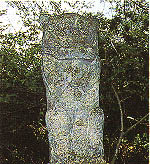 |
Houpan Mountain in Jinning Town Materials: mud and brick Towards: northeast Posture: upright High (cm): 189 Wide (cm): 76 Note: beside the ditch behind the branch of Siashe Houpan |
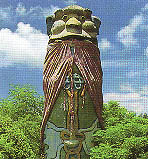 |
Anchi of Jinning Town Materials: mud and brick Towards: northeast Posture: upright High (cm): 385 Wide (cm): 109 Note: beside the army camp in front of the commander temple
|
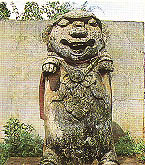 |
Husia of Jinning Town Materials: mud and brick Towards: northeast Posture: upright High (cm): 128 Wide (cm): 42 Note: beside the road on the right side of Hupu branch |
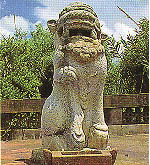 |
Beishan in Jinning Town Material: stone Towards: southeast Posture: squatting High (cm): 119 Wide (cm): 42 Note: beside the Two-carp Lake |
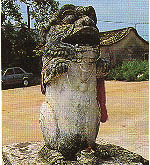 |
Dongjhon in Jinning Town Materials: mud and brick Towards: north Posture: upright High (cm): 131 Wide (cm): 56 Note: beside Fuyou Temple |
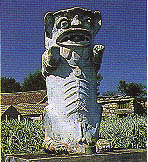 |
Siguoshan in Jinning Town Materials: mud and brick Towards: south Posture: upright High (cm): 155 Wide (cm): 62 Note: beside Fazhu Temple |
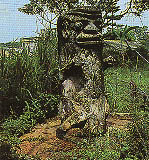 |
Houhu in Jinning Town Materials: mud and brick Towards: northeast Posture: upright High (cm): 189 Wide (cm): 60 Note: beside Huiyuan Memorial Hall |
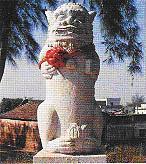 | Banglin in Jinning Town Materials: stone Towards: northeast Posture: upright High (cm): 142 Wide (cm): 40 Note: beside No. 51, Banglin |
|---|
Shigandang Stone
Chinese people pay much attention to “Fengshui” when a house is built. If there is an alley or pillar that can’t be moved around the house, it is called “obstacle,” and a stone would be set to avoid the obstacle. This stone would be called Shigandang Stone. The Shigandang Stone in the picture is the representative that has both stone seat and stone head.
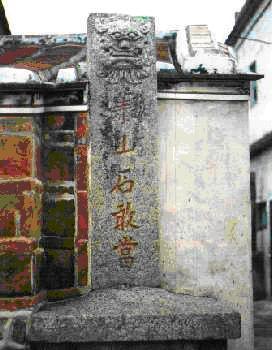
↑Shigandang Stone behind “Zhenwei Villa”
Feng-ji-yao-lin-jian (Arrow in a Rooster’s Beak) Stone
Located near Anchi village, the “Arrow in a Rooster’s Beak” that faces the intersection is believed to be equally powerful as the Wind-lion God and Shihgandang in terms of fending off evil spirits. This statue was originally shorter, closer to the road, and badly weathered for the engraving to be seen. With the widening of the roads that are 120 steps away, the statue was restored and made bigger, with a “Bagua” on top of it and a colored rooster with an arrow in the beak. A stove beneath the rooster has engravings of words of luck and blessing on the left, right, and back sides.
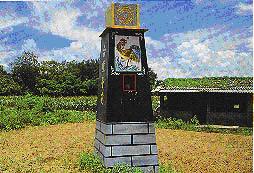
Feng-ji-yao-lin-jian (Arrow in a Rooster’s Beak) Stone
Visitors Center of Two-carp lake
Visitors Center of Two-carp Lake is located beside the Two-carp Lake. It is a three-story modern building completed in recently years. It is also a center of nature ecological database. It is next to the Two-carp Lake with a class screen; people have the chance to view the original natural environment of Two-carp Lake through the glass. The explanation for the data of Kinmen ecology of birds and plants is provided on the other two stories.
